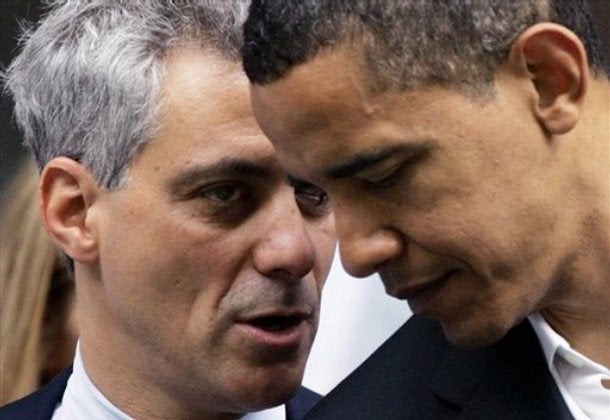
Upon hearing news that Justice David Souter would be retiring at term's end, senior White House aides hastily convened a meeting in the West Wing on Thursday night to discuss potential replacements, according to an administration official.
The meeting, in which the steps for filling the vacancy were discussed, was just one step in a Supreme Court planning process that the administration official described as intensive and months old.
Indeed, Barack Obama began preparing for the reality that now confronts him -- an opening on the country's highest court -- before he was sworn in as president, back in December. In transition meetings in both Chicago and Washington, aides to Obama identified and researched potential candidates to fill the Supreme Court bench. Obama was directly involved in the deliberations, said the official, offering guidance on the types of Court nominees would meet his standards and even personally suggesting names.
According to a Democratic strategist with knowledge of the process, many possibilities have been bandied about in these "process groups." But the one most often mentioned has been Sonia Sotomayor, the odds-on favorite who currently sits on the U.S. Court of Appeals for the 2nd Circuit.
The Democrat noted that, in a stroke of prescience or just plain luck, the White House had actually been preparing for a vacancy to pop up sometime during the summer. "They were planning as if they were getting an opening before the end of the summer."
In this respect, they were not caught off-guard upon hearing news of Souter's impending departure. The details of how Obama and his aides have prepared themselves for a Supreme Court retirement reflects a no-stone-left-unturned approach on the part of the administration, as well as an tacit acknowledgment that filling a Court vacancy is one of the more daunting tasks a president faces.
Upon taking office, according to the administration source, the White House intensified the effort it had started during the transition. In meetings in the office of chief counsel Greg Craig, officials began reviewing possible nominees, their judicial records, and personal backgrounds.
As the Democratic strategist added, the team was also cognizant that modern-day research tools could effectively turn up information that traditional vetting processes would miss.
"They are looking at all factors," said the strategist, "including the fact that even the biggest online communication tools and sites have grown significantly since the last confirmation effort [during the Bush administration]."
For all the advanced preparation, however, the news that Souter would be the first justice to step down from the Court likely came as a surprise. Early speculation held that Justice Ruth Bader Ginsburg, who is recovering from surgery for pancreatic cancer, would be the first Obama-era retiree from the bench. But she has vowed to stay on.
Word of Souter's impending departure made its way to the White House via private channels earlier this week. But a formal announcement was not delivered until Friday, when the president entered the White House press briefing room unannounced to tell reporters that the Justice had informed him of his retirement.
Later in the day, the White House released the letter that Souter had penned to the President saying that "when the Supreme Court rises for the summer recess this year. I intend to retire from regular active service as a Justice."
"I mean to continue to render substantial judicial service as an Associate Justice," Souter concluded.
As for filling the seat, the administration official said that the White House was confident that with consultation with the Senate, a new Justice could be confirmed by the first Monday of October, when the Court is back in session.
